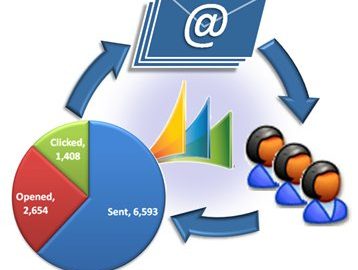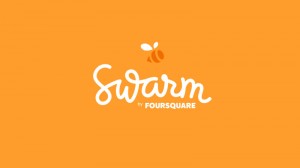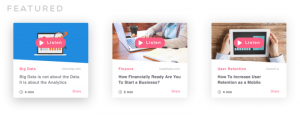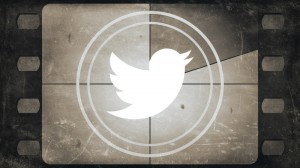Email segmenting is one of the most powerful techniques for boosting open rates, CTRs, and total revenue per email. It’s also surprisingly neglected.
With the high cost for sophisticated email platforms and the technology segmentation requires, it makes sense.
 Fortunately, there is a simple way any marketer with 10 to 20 emails sent per month can take advantage of segmentation in email marketing efforts.
Fortunately, there is a simple way any marketer with 10 to 20 emails sent per month can take advantage of segmentation in email marketing efforts.
The Categorization Approach to Email Segmentation
Let’s look at a typical listing of various email sends you may deploy in a given week:
- Promotional sales email
- Email showcasing your latest blog posts
- Announcement about some recent industry or company change
Other than the break-down of these messages as promotions, newsletters, or announcements, there is no process that categorizes the actual content.
Consequently, this presents a shiny ray of light for our email segmentation pot under the rainbow. Each and every email you’ve sent can be categorized in a way that tells more about what your audience is interested in. That’s data that can, once utilized, make for better targeted email campaigns with higher response rates.
Here are two of the easiest, most efficient categorization approaches you can start utilizing:
#1. The Product / Topic Segment
Different people on your email lists are naturally interested in different things. With this approach, you simply take your subject lines and organize them into topics.
By creating this type of category-based segmentation, you give yourself a better way to cater emails to your audience.
This keeps people from receiving emails they have no interest in and, more importantly, ensures the emails they do get are based on their specific interests.
#2. The Appeal / Emotion Segment
If you have just one product or topic you email about, segmenting as above may not do much for you. That’s where the appeal / emotion segment really becomes useful.
Rather than blasting out another promotional email to 20,000 recipients, take a look at the past promotional emails you’ve sent.
Likely you’ve tried a variety of approaches:
- Special offers
- Emails focused on what the customer will gain
- Emails focused on fear or the problem your product solves
- Emails focused on exclusivity
Subject lines derive their power from the emotional appeal they trigger in the minds of readers. Readers that opened emails with one type of emotional appeal are much more likely to open that approach again, rather than an appeal they’ve ignored.
And that’s what segmentation is built upon – behavior. An action performed today is likely to be repeated again tomorrow.
As Elliot Howard states, “an action performed to-day is liable to be repeated tomorrow and the following day until it becomes ingrained in the life of the individual.”
Start With Your Past Sends
Just look at this set of subject lines from a non-profit music organization over the past few months:
- Steinway piano special
- American Dreams Concert
- Sizzling Hot August Specials
- Master Class with Buddy Strong, keyboardist for Usher, this Saturday at 10am!!
- #eventinvite
- IMPORTANT: Please Read
- Holiday Studio Specials
- Introducing New Vocal Coach, Kim F.
These emails were all sent to the same list. If you were a vocalist with zero piano playing abilities, would “Steinway piano specials” really appeal to you?
Probably not.
When it comes to users’ inboxes, every email you send is creating an experience. Users may not open an email but if they glance over at your subject line and turn it down, that’s a point against you in their eyes.
Do this enough times and your visitor will likely finally open the email to unsubscribe (or worse, they’ll just click “Spam”).
That’s where the product / topic segment approach comes in.
Taking the subject lines above we’ve got a few categories we can lump things in:
Pianists
- Steinway piano special
- Master Class with Buddy Strong, keyboardist for Usher, this Saturday at 10am!!
Vocalists:
- Introducing New Vocal Coach, Kim Fernandez
Those that are interested in recording:
- Holiday Studio Specials
Recipients who opened the emails above likely were interested in the category it’s been lumped into.
While many more basic email service providers won’t allow you to automatically create segments, you can easily do it in a few simple steps:
- Export your list of openers
- Add a custom field to your list
- Label this field your “category”
- Create this custom field in your email service
- Re-import the list with the added data
Now all the emails that opened the “Pianist” segment have an additional layer of data about their preference.
This process will take a total of five minutes. The value you’ll get out of this simple process, however, is invaluable.
Getting Started with Email Categorization for Segmentation
Contrary to common belief, you don’t a high volume email workflow to start with segmentation. A simple monthly prospecting email, for example, is perfect to segment and optimize.
Simply create a few different segments and work to optimize the following for each:
- Subject Lines
- Headlines in the email content
- The Intro paragraph
By catering these three elements to the segment your users fall into, you’ll better personalize your emails.
The key is to get into your email data and start using what you have. It doesn’t have to be perfect. All you have to do is get things moving.
Digital & Social Articles on Business 2 Community(29)









